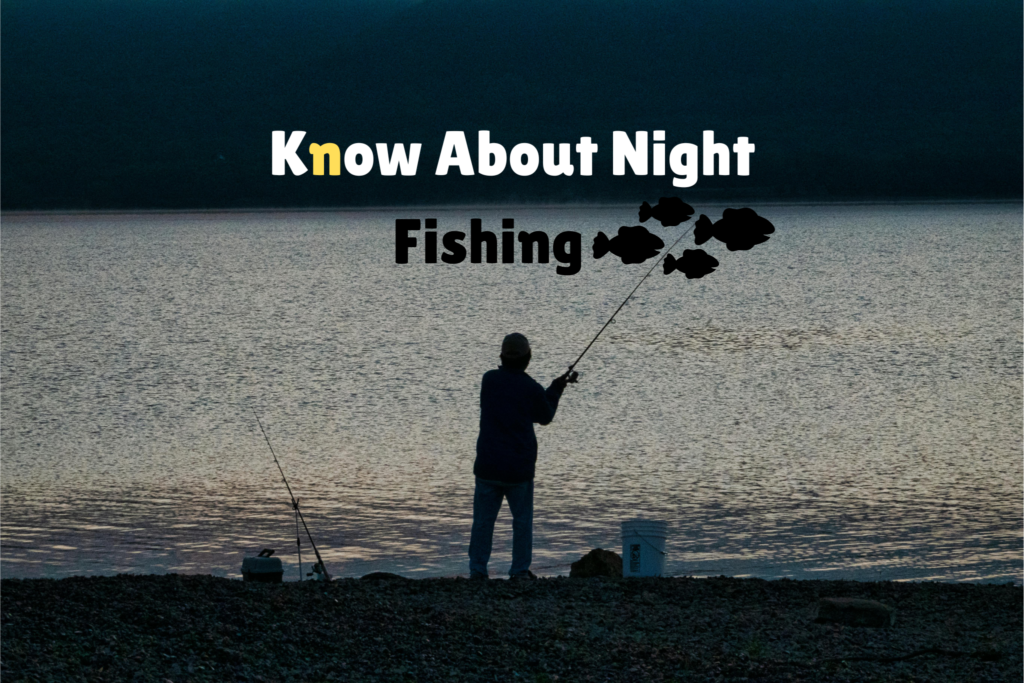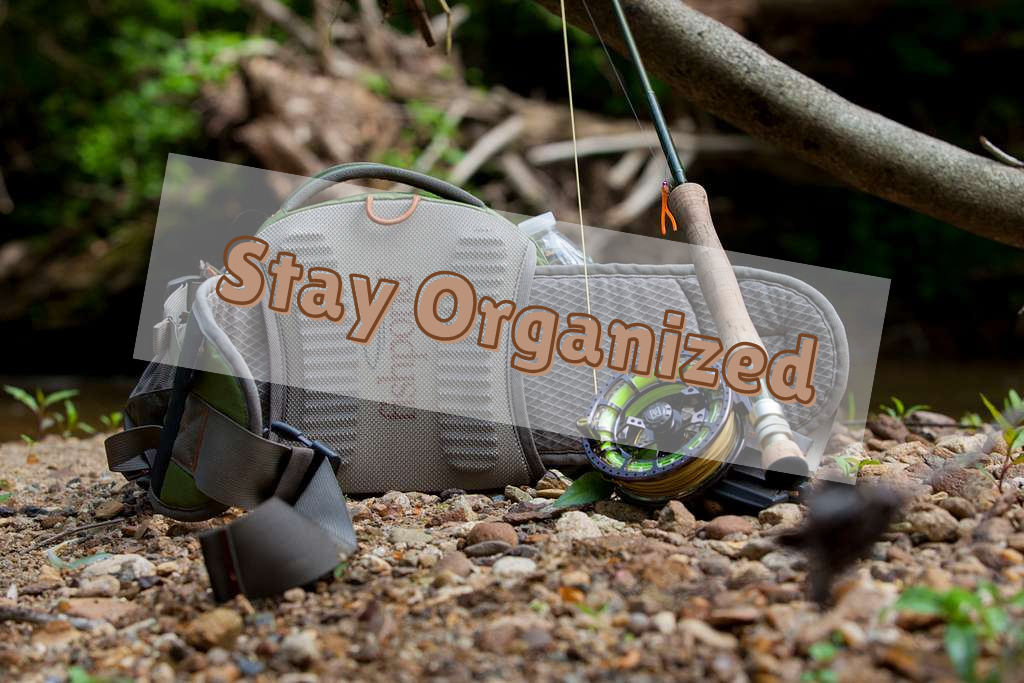
So, you’ve decided to take your fishing skills to the next level, and that next level involves fishing in the dark, right? You must be one of those people who enjoy challenges. Or maybe, you just like the idea of catching fish while everyone else is snoozing. Either way, night fishing is an adventure that’s definitely worth trying. But before you grab your gear and head off into the darkness, let’s talk about setting yourself up for success.
No one wants to sit in the dark, wasting time hoping for a bite. That’s why getting the right setup is key. Trust me, it’s like trying to drive without headlights. Not a good idea. But don’t worry, we’ll light the way for you, literally and figuratively.
The Essential Night Fishing Gears
Alright, enough of the poetic stuff. It’s time to talk gear. Fishing at night is different from fishing during the day, and your setup needs to reflect that. But don’t worry, you don’t need a whole new wardrobe of fishing gear. You just need to make a few smart adjustments.
1. Headlamp or Flashlight
First and foremost, you need a good light source. I mean, it’s called “night fishing” for a reason! But you don’t want to be fumbling around in the dark, right? A headlamp is your best friend here because it keeps your hands free for casting, reeling, and—let’s face it—untying all those knots you’re inevitably going to make.
A flashlight works well too, but you’ll have to hold it in one hand, and that’s just awkward. Whatever light you choose, make sure it’s bright enough to help you see your line, hooks, and tackle box, but not so bright that it scares all the fish away. No fish likes a spotlight on them.
Pro tip: Get a red light option. It won’t mess with your night vision (you’re going to need that), and it’s less likely to spook the fish. Bonus points if your headlamp is water-resistant—because, you know, fishing and water go hand-in-hand.
2. Lighted Bobbers or Glow Stick Bobbers
Alright, so you’ve got your headlamp sorted. But how do you see your bobber out in the water? You don’t want to spend all night straining your eyes trying to spot that tiny little dot bobbing in the distance. That’s where lighted bobbers or glow stick bobbers come in.
These bobbers are super handy because they make it easy to track your bait from afar. The glow will help you spot bites, and you won’t waste time guessing if your bait is still in place or if it’s time to reel in. Just clip a glow stick or a lighted bobber onto your fishing line, and you’re good to go.
3. Fishing Rod and Reel
You don’t need to change your whole fishing rod setup for night fishing. The same one you use during the day will do, as long as it’s in good working condition. But there are a couple of things to consider.
- Longer Rods: A longer rod (around 7 to 9 feet) will give you better casting distance. This is important because fish like to stay away from the shore at night, so you’ll need a rod that helps you cast farther out.
- Smooth Reel: Make sure your reel is smooth and doesn’t make too much noise. The quieter, the better. You’ll appreciate this when you’re trying to sneak up on a fish in the stillness of the night.
- Strong Line: Use a strong, durable fishing line, like a braided line. It’s less likely to snap in the dark, and it’s easier to manage when you’re using it on unfamiliar terrain.
4. Bait and Lures
Nighttime fish, like bass or catfish, aren’t as picky about bait as you might think, but they do tend to like certain things more at night. Since it’s dark and fish can’t rely on their sight as much, they depend on their sense of smell and vibration.
- Live Bait: Worms, minnows, or even nightcrawlers are all great choices for night fishing. Catfish especially love the scent of live bait.
- Artificial Lures: If you’re using lures, go for something that creates a lot of movement or noise. The vibration and flash will grab the fish’s attention. Consider crankbaits, spinnerbaits, or even glow-in-the-dark lures.
The key is to experiment with different types of bait and see what works best for the species you’re after.
5. Tackle Box with Essentials
Your tackle box needs to be well-organized and contain the basics you might need while night fishing. Remember, you’ll be dealing with darkness, so having everything neatly laid out will help you avoid unnecessary fumbling when you need to change bait or lures. Make sure to pack:
- Spare hooks
- Extra sinkers
- Swivels and leaders
- Bobbers and weights
- Extra line
- Pliers for hook removal
- A few small knives for cutting line
Keep your tackle box simple but stocked with essentials. After all, you don’t want to be running to the car in the middle of the night to grab something you forgot!
6. Comfortable Clothing
Fishing at night doesn’t come with a nice sunny, warm weather guarantee. You may think it’s warm during the day, but when the sun sets, temperatures can drop quickly. Bring along a light jacket or layers you can put on when it gets cooler. And be sure to wear good waterproof shoes—because there’s a good chance you’ll step in some water while setting up or trying to catch that fish of the night.
Don’t forget the bug spray. Some places get pretty buggy at night, and you’ll be much happier focusing on your fishing rather than swatting at mosquitos.
7. Cooler or Bucket for Your Catch
You’ve got your gear, you’ve got your bait, now it’s time to think about what to do with your catch. A cooler or bucket will keep your fish fresh until you’re ready to head home. Just be sure to have some ice or water in the cooler to keep them from getting too hot or drying out.

Best Fishing Tips for Nighttime Success
Now that your setup is ready, let’s talk about some strategies to help you reel in your catch.
- Choose the Right Location: Fish often stay in the same places at night, so pick a spot that has a good reputation. Look for areas with underwater structures like rocks, fallen trees, or deep holes where fish like to hang out.
- Be Quiet and Patient: The stillness of the night can be both a blessing and a curse. Fish are extra sensitive to noise, so be quiet when you’re setting up your gear. Avoid splashing or making any sudden movements.
- Time Your Trip: Fish are more likely to bite when the moon is out, especially if it’s a full moon. The moonlight can help them navigate the water. Low-light conditions also make it easier to catch fish that are typically more cautious during the day.
- Stay Alert: Keep an eye on your bobbers or fishing line. If you see it twitch or move in an unusual way, don’t wait too long to strike! Fish are quick at night and might swim away before you realize what happened.
Fish You Can Catch Generally at Night
Night fishing in the U.S. offers a wide range of opportunities to catch some exciting species. Whether you’re in freshwater or saltwater, different fish are more active in the dark and can make your fishing trip memorable. Here’s a list of fish you can commonly catch at night:
- Catfish (Channel, Blue, and Flathead): One of the most popular nighttime fish. They are extremely active at night and love live bait like nightcrawlers or cut bait.
- Bass (Largemouth and Smallmouth): Bass are often active at night, particularly in warmer months. Largemouth bass, in particular, are great to catch in the evening or night near submerged structures.
- Walleye: These elusive fish are often more active in low-light conditions. Walleye are a popular catch for night fishermen, particularly around drop-offs and near structures in deeper waters.
- Striped Bass: Nighttime is a prime time for striped bass, especially during their migratory periods. They can be found near piers, jetties, and rocky shorelines.
- Crappie: This panfish tends to move into shallower waters at night to feed. Crappie are more likely to bite under cover of darkness and are often found near brush piles or submerged structures.
- Pike and Muskie: Both pike and muskie are known to be active at night. They prefer cooler waters and are often found near deep holes or along weed lines at night.
- Trout: While trout are typically more active during early mornings or late afternoons, they do feed at night, especially in colder waters or spring-fed streams.
- Shad: Shad are active feeders at night and are an important baitfish for predators. They can often be found near deeper water and are easy prey for species like bass or walleye.
- Flounder: Especially in coastal areas, flounder come out at night to hunt along the bottom. Night fishing for flounder can be especially productive around high tide.
- Snapper (Red Snapper and Mangrove Snapper): These species are active at night and are often found near wrecks, reefs, or rocky structures in coastal waters.
Night fishing is one of the most thrilling ways to catch fish. While it can seem a little daunting at first, especially if you’re used to fishing during the day, with the right setup and approach, it becomes an experience like no other. So, grab your gear, head to a quiet spot, and enjoy the peace and excitement that comes with fishing under the stars.
And remember, it’s not just about the fish you catch—it’s about the stories you’ll have afterward and the memories you make.
